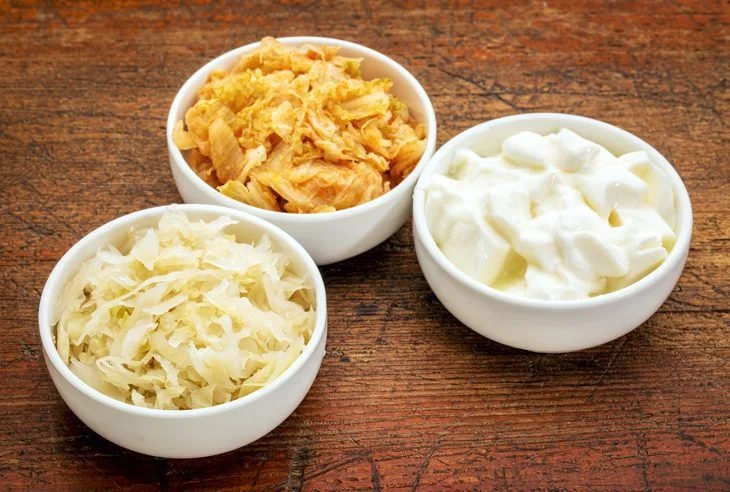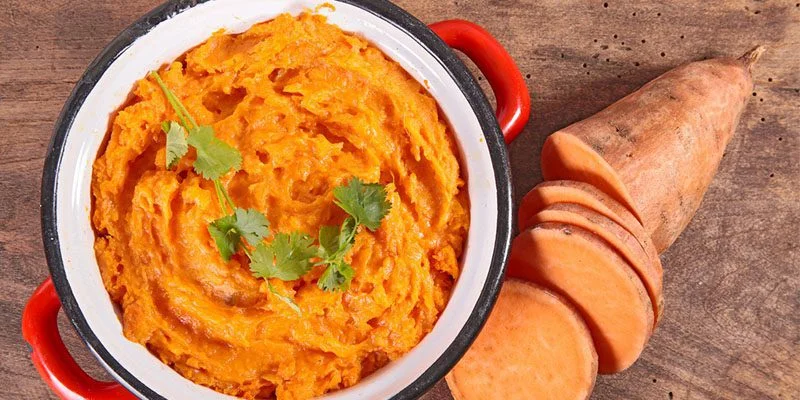8 Ways to Boost Your Probiotic Health with These Foods
“Bacteria in your food” typically gets a pretty bad rap since most of the time we’re thinking about the bad ones, like E. coli, listeria, or salmonella. The bacteria in probiotic foods, however, are actually good for you – these are the “good bugs” that you want in your gut.
You probably realize how critical it is to include probiotics in your healthy life plan. But, you are likely not getting enough in your diet. So where do you find them?
Add some of these healthy foods to your diet to get a probiotic boost!
1. Kimchi
Spicy and sour, this traditional Korean side dish is mixture of fermented vegetables and seasonings. Since it is primarily made of cabbage, brine, radish and spices such as ginger and chili pepper, kimchi is a great low-calorie source of fiber as well as providing beneficial bacteria. Try adding this unique ingredient to sandwiches, stir-fries or soup, but be sure to add it last to avoid cooking off the good bacteria.
2. Fresh Sauerkraut
Found in the refrigerated section of the supermarket, fresh sauerkraut is shredded cabbage that has been fermented, which fosters the growth of probiotics. Be sure to choose the unpasteurized kind, because pasteurization (used to treat most supermarket sauerkraut) kills active, good bacteria.
3. Sour Pickles
Salty pickle spears also deliver a punch of probiotics. However, when looking to pickles for probiotics, choose naturally fermented kinds, where vinegar wasn’t used in the pickling process. A sea salt and water solution feeds the growth of good bacteria. A good rule of thumb: if they’re sold out on the shelf at room temperature, they definitely do not contain healthy bacteria. Look for a container labeled “live and active cultures” and sold in the refrigerator section.
4. Miso
This traditional Japanese seasoning is made by fermenting cooked soybeans with barley or rice, salt, and koji (a starter culture) to form a red, white, or dark colored paste. To get the maximum benefit from the live cultures, buy unpasteurized miso paste in the refrigerated section of your grocery store and add to soups or stews just before removing from heat. Miso can also be used in place of salt in your favorite recipes, as well as in dips, marinades, and salad dressings.
5. Tempeh
Another probiotic rich food made from fermented soybeans, tempeh is a white, firm block that is frequently used as a protein-packed meat substitute for vegans and vegetarians. You can marinate and cook it, or try it crumbled over salads. Its flavor is often described as nutty, smoky, and similar to a mushroom.
6. Kombucha
This 2000-year old beverage is a slightly sweet and effervescent liquid that results when sweet black tea is fermented with a colony of bacteria called a “SCOBY” (a Symbiotic Colony Of Bacteria and Yeast). Find it in the refrigerated section of your grocery store or pick up your own home-brew kombucha kit.
7. Kefir
A milky beverage originating in Turkey and Russia, kefir is an outstanding source of probiotics – containing anywhere from 10 to 34 different strains. It is made by fermenting goat, cow, or sheep’s milk with kefir “grains”– a combination of yeast and bacteria. For those who are sensitive to dairy or lactose intolerant, coconut kefir, a non-dairy version, is also delicious and equally beneficial.
8. Yogurt
Last but definitely not least is the popular and well-known fermented milk product made from cow’s milk, goat’s milk, sheep milk, soy milk, coconut milk, or even nut milk. Not all yogurts are the same, so stay away from those filled with sugars and syrups. Be sure to choose those containing “live and active cultures”.
Food is by far the best way to build up healthy gut microbes, but if you’re not consuming lots of kimchi and kefir on a regular basis, consider taking a probiotic supplement like BrainMD Health’s very own ProBrainBiotics.
- Veterans Day: One Warrior Shares Some of the Best Ways to Heal from Trauma - November 2, 2023
- Could Your Mood Issues Be Linked to a Pain In the Neck? - October 13, 2023
- What’s At the Root of Your Sciatic Nerve Pain? - September 20, 2023



